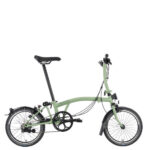Choosing the right bike rack for your vehicle can be a daunting task, especially with the variety of options available on the market. From hitch-mounted racks to roof racks, and from tray racks to Vertical Bike Racks, each type offers unique advantages and disadvantages. Many cyclists find themselves weighing the pros and cons of different styles to determine the best fit for their needs. This article delves into the comparison between tray racks, a common style, and the increasingly popular vertical bike racks, helping you make an informed decision.
Tray racks, exemplified by brands like Kuat and 1up, are well-regarded for their ease of use and stability, particularly when transporting one or two bikes. Users often praise how straightforward it is to load bikes onto tray racks, and appreciate the minimal wobble experienced during transit. The compact design of some tray racks also makes storage convenient when they are not in use. For instance, a 2-bike Kuat rack is lauded for its solid build and ease of storage, making it ideal for regular use with a smaller number of bikes. The modularity of brands like 1up, allowing users to easily add or remove trays, adds to their appeal for those with varying bike-carrying needs.
However, tray racks also come with limitations. Capacity can be a constraint, as some models are limited to fewer bikes, and upgrading capacity can sometimes be cumbersome or costly. Larger tray racks, especially those designed for four or more bikes, can become heavy and unwieldy, making them less convenient for frequent removal and installation. The extended length of these larger tray racks when loaded can also pose challenges in parking and maneuverability.
Vertical bike racks, on the other hand, present a different approach to bike transportation. These racks, like the Recon Rack, are designed to carry multiple bikes in a vertical orientation, hanging by the front wheel. A key advantage of vertical bike racks is their high capacity; some models can accommodate up to six bikes, making them ideal for families or groups of riders. Loading bikes onto a vertical bike rack is often described as simple and quick, and this style of rack is known for holding bikes securely, minimizing movement during travel. The design also allows for tailgate access on many vehicles, even when loaded, adding to their practicality for everyday use.
Despite their benefits, vertical bike racks also have considerations. Their robust construction to support multiple bikes can make them heavier than smaller tray racks, which might be a factor for some users in terms of installation and storage. While they often allow partial tailgate access, fully accessing the tailgate might require unloading bikes or removing the rack entirely, depending on the specific model and vehicle.
Ultimately, the choice between vertical bike racks and tray racks hinges on your individual needs and priorities. If you frequently transport a larger number of bikes and prioritize ease of loading and stability, a vertical bike rack is a strong contender. If you typically carry one or two bikes and value lightweight design and compact storage, a tray rack might be more suitable. Both styles offer reliable ways to transport your bikes, and understanding their respective strengths and weaknesses will guide you to the best decision for your cycling adventures.


